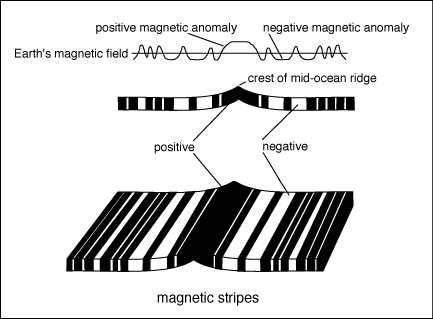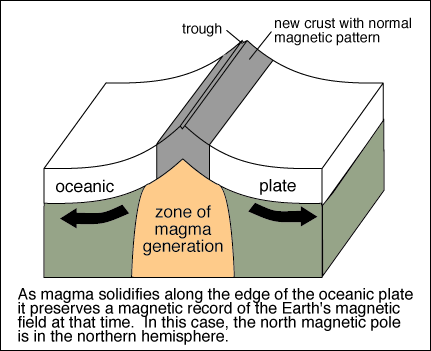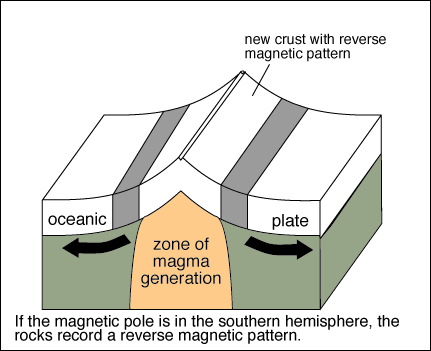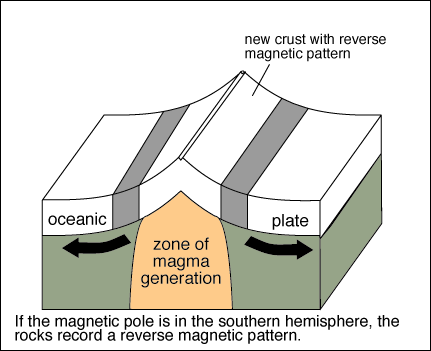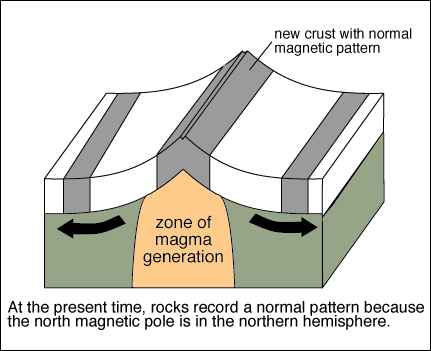Sea-floor Spreading It wasn't until the late 1950's that scientists were able to map the present-day magnetic field generated by rocks on the floor of the Pacific Ocean. The volcanic rocks which make up the sea floor have magnetic properties because, as they cool, the magnetic iron and nickel based minerals within the rock align themselves to the Earth's magnetic field. Iron and nickel are magnetic materials. Their structure contains 'magnetic domains' - see magnetism notes.
When they looked at the values of magnetic intensity that they measured they found it was very different from the intensity they had calculated it would be. The scientists detected 'magnetic anomalies', differences in the magnetic field from place to place, instead of a gradual variation in the field strength. They found positive and negative magnetic anomalies. These were formed because the Earth's magnetic field switches over a very long time period. At the moment the North magnetic pole is in the North geographical region but from time to time it has been in the South geographical region!
When mapped, the anomalies produce a striped pattern of parallel positive and negative bands - like bar codes! The pattern is symmetrical and centered along, the mid-ocean ridge. A hypothesis was put forward in 1963 by Fred Vine and Drummond Matthews to explain this pattern. They proposed that lava erupted at different times along the rift at the crest of the mid-ocean ridges preserved different magnetic anomalies They suggested that when the plates moved apart in the geologic past (when the north magnetic pole was in the northern hemisphere) the magma that broke through the gap between the plates preserved a positive magnetic anomaly.
But in the geologic past, when the north magnetic pole was in the southern hemisphere, the magnetic materials in the new rocks orientated themselves in the opposite direction - resulting in a negative magnetic anomaly.
Sea floor spreading at the present time would result in a positive magnetic anomaly because the Earth's north magnetic pole is in the northern hemisphere. Vine and Matthews proposed that magma erupted on the sea floor on both sides of the rift, solidified, and moved away before more was erupted. If the Earth's magnetic field had reversed (changed from one geographic pole to the other) between the two eruptions, the magma flows would preserve a set of parallel bands with different magnetic properties. The ability of Vine and Matthews' hypothesis to explain the observed pattern of ocean floor magnetic anomalies provided strong support for sea floor spreading. Useful links Geomagnetism Geomagnetism . The information and the above diagrams were extracted from a page on the site of the University of South Dakota |
Follow me...
|


